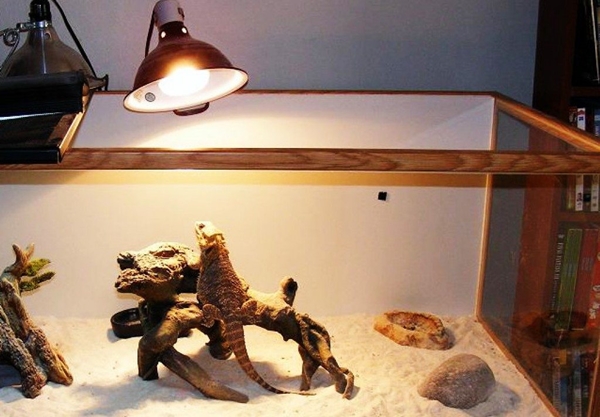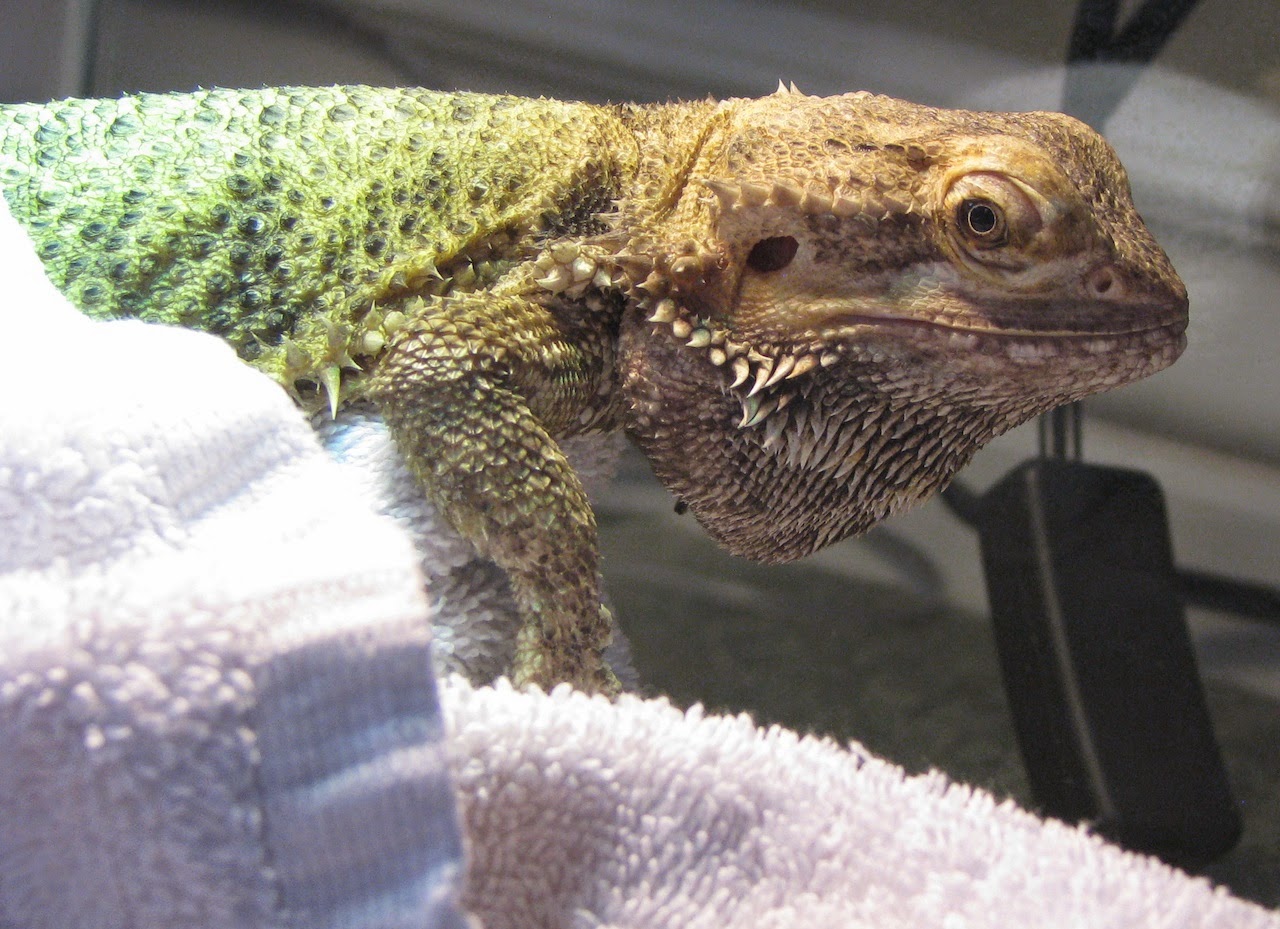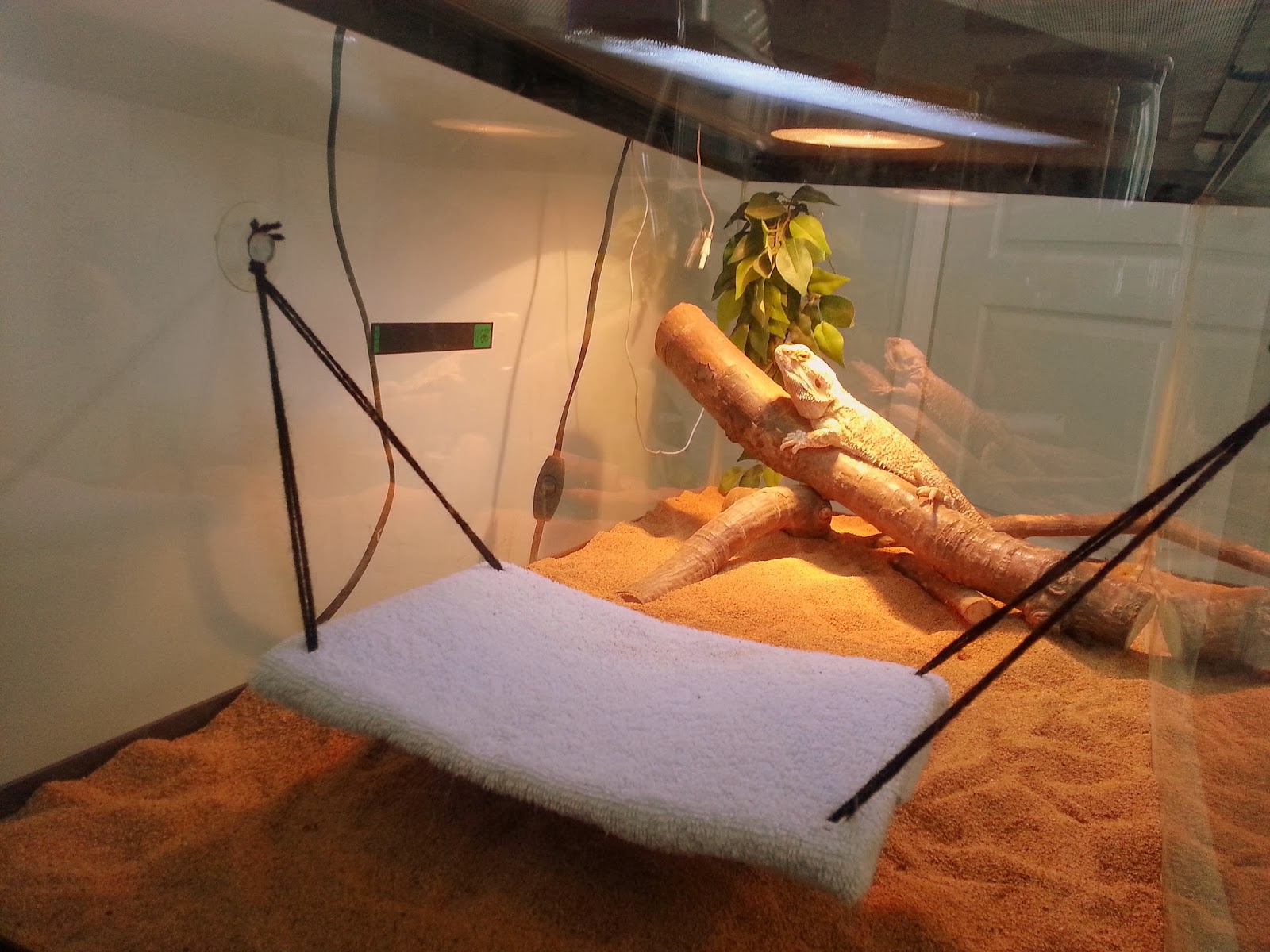The Ultimate Guide to Bearded Dragon Heating Lamps: Keep Your Reptile Happy & Healthy
Introduction
As a new bearded dragon owner, one of the most important things you need to consider is how to provide the right temperature for your pet to thrive. Bearded dragons are cold-blooded reptiles that require a specific range of temperatures to maintain their health, metabolism, and activity levels. In the wild, these lizards bask in the sun to warm themselves up, but in captivity, you need a heating source to simulate this natural behavior. One of the most popular options is a heating lamp, which can help regulate the temperature and provide a reliable source of UVB radiation for your bearded dragon. In this blog post, we’ll explore everything you need to know about bearded dragon heating lamps, including how to choose the right type, size, and wattage, how to set up a heating system, and how to maintain it properly. By the end of this guide, you’ll be a pro at keeping your bearded dragon happy and healthy!
What is a Bearded Dragon Heating Lamp?
A bearded dragon heating lamp is a type of light bulb that emits heat and light for reptiles to bask under. It’s usually placed inside a fixture or hood that attaches to the top of the terrarium or tank where your bearded dragon lives. The concept behind a heating lamp is to replicate the natural sun rays that bearded dragons would typically receive in the wild. Without an artificial source of heat, your pet could become lethargic, lose its appetite, and develop various health issues, such as respiratory infections, metabolic bone disease, or stunted growth.
Types of Bearded Dragon Heating Lamps
Before you buy a bearded dragon heating lamp, you should know there are several types in the market, each with its pros and cons. Here’s a rundown of the most common types:
1. Incandescent Bulbs
Incandescent bulbs are the cheapest and most straightforward option for heating your bearded dragon enclosure. These bulbs are similar to regular light bulbs but release more heat than light. You can find them in different wattages and shapes, such as spotlights or floodlights, to provide targeted or broader coverage. However, incandescent bulbs have a short lifespan and tend to burn out quickly. They also produce less UVB radiation than other types of bulbs, which means you may need to supplement with another UVB source, such as a fluorescent tube or a mercury vapor bulb.

2. Ceramic Heat Emitters
Ceramic heat emitters, or CHEs, are a popular choice among bearded dragon owners who want a more long-lasting and reliable heating source. These bulbs are made of ceramic material that can withstand high temperatures without emitting light, making them perfect for providing warmth without disrupting your pet’s day and night cycle. You can use them with a dimmer switch or thermostat to regulate the temperature more precisely. Ceramic heat emitters don’t emit UVB radiation, so you still need a separate UVB source. They also produce a dry heat that can dry out the air, so you may need to use a humidifier or misting system to balance the humidity level in the tank.

3. Mercury Vapor Bulbs
Mercury vapor bulbs, or MVBs, are a newer and more advanced type of bearded dragon heating lamp that combines heat, light, and UVB radiation in one bulb. This makes them a convenient and space-saving option for those who want to provide all the necessary requirements for their pet with one bulb. MVBs are more expensive than incandescent bulbs and ceramic heat emitters, but they can last up to a year or more. They also emit a more natural and broader spectrum of light and UVB radiation that can benefit your bearded dragon’s health and behavior, such as appetite, coloration, and vitamin D3 synthesis. However, MVBs can become too hot and may require more ventilation or distance from the basking spot. They also emit less heat than ceramic heat emitters, so you may need to combine them with a secondary heat source or adjust the wattage accordingly.

Factors to Consider When Choosing a Bearded Dragon Heating Lamp
Choosing the right heating lamp for your bearded dragon can be overwhelming, given the various options and specifications available. Here are some factors you should consider before making a purchase:
Size of the Tank
The size of your bearded dragon tank determines the size and wattage of the heating lamp you need. In general, you need a heating lamp that provides a basking spot temperature of 95-110°F (35-43°C), a cool side temperature of 75-85°F (24-29°C), and a UVB index of 2-6. For example, for a 20-gallon tank, you may need a 75-watt bulb, while for a 40-gallon tank, you may need a 150-watt bulb. However, you should always measure the temperature and adjust the wattage accordingly, as different factors can affect the heat inside the tank, such as room temperature, humidity, substrate, and water dish.
Type of Bulb
As discussed earlier, there are different types of bearded dragon heating lamps, including incandescent bulbs, ceramic heat emitters, and mercury vapor bulbs. Each type has its advantages and disadvantages, so you should choose the one that best suits your needs and budget. If you live in a cold climate or have a large tank, you may prefer a ceramic heat emitter or a mercury vapor bulb to ensure consistent and sufficient heat. If you are on a tight budget, an incandescent bulb may suffice for a small or temporary tank.
Brand and Quality
Not all bearded dragon heating lamps are created equal, and some are more reliable and durable than others. You should look for a reputable brand that specializes in reptile lighting and has positive reviews and ratings from other customers. Cheap or unknown brands may not provide the necessary heat output or UVB radiation, and may even break or explode, posing a risk to your pet’s safety. You should also check the bulb’s quality, age, and authenticity before buying it, as some bulbs may lose their effectiveness over time, especially if exposed to moisture or dust.
How to Set Up a Bearded Dragon Heating Lamp
Now that you have chosen your bearded dragon heating lamp, it’s time to set it up properly to ensure your pet’s comfort and safety. Here’s a step-by-step guide for setting up a bearded dragon heating lamp:
Step 1: Choose a Suitable Fixture or Hood
The fixture or hood that you use for your bearded dragon heating lamp should be compatible with the bulb’s size and wattage and provide sufficient space for your pet to bask and regulate its body temperature. You can choose a dome fixture, a wire guard fixture, or a combination fixture, depending on your preference and budget. Make sure the fixture is made of heat-resistant and durable material and has a ceramic socket that can withstand the high temperatures. You should also route the fixture’s cord neatly and avoid pinching or exposing it to water or heat sources.
Step 2: Position the Lamp in the Tank
The position of your bearded dragon heating lamp depends on the type of bulb and the layout of your tank. In general, you should aim to create a basking spot that’s 6-10 inches (15-25 cm) away from the lamp and has a flat, smooth, and stable surface where your bearded dragon can sit and soak up the heat. You can use a rock, a log, or a platform as a basking surface and cover it with a reptile safe substrate, such as reptile carpet or paper towel. You should also make sure the lamp’s heat and light can reach the cool side of the tank and create a thermal gradient that allows your bearded dragon to move around and regulate its temperature as needed.

Step 3: Plug In the Lamp and Test the Temperature
Once you have installed and positioned your bearded dragon heating lamp, you can plug it in and let it warm up for a few minutes. Then, you should use a thermometer or a temperature gun to measure the temperature at the basking spot and the cool side of the tank. If the temperature is too high or too low, you can adjust the wattage or the distance between the lamp and the basking spot. You should also monitor the temperature regularly and make sure it stays within the optimal range for your bearded dragon’s species, size, and age. You can use a thermostat or a timer to automate the heating system and avoid over or underheating.
How to Maintain a Bearded Dragon Heating Lamp
A bearded dragon heating lamp is not a set-and-forget device, and you need to maintain it regularly to ensure its efficiency, longevity, and safety. Here are some tips for maintaining a bearded dragon heating lamp:
Replace the Bulb Periodically
Bearded dragon heating lamps have a limited lifespan, depending on the type and quality of the bulb. As a general rule, you should replace the bulb every 6-12 months, or sooner if you notice any signs of wear, tear, or damage, such as flickering, dimming, or cracking. You should also clean the bulb regularly with a soft cloth or a damp towel to remove dust, debris, or grease that can reduce its light and heat output.

Clean the Fixture and Hood
The fixture and hood that you use for your bearded dragon heating lamp can accumulate dirt, dust, or bacteria that can affect the bulb’s performance and pose a hazard to your pet’s health. You should wipe the fixture and hood with a disinfectant solution or a vinegar-water mixture regularly and remove any residual substrate, feces, or food. You should also check the condition and tightness of the screws, clips, or clamps that hold the fixture in place and tighten or replace them if necessary.
Check the Temperature and UVB Output
As mentioned earlier, you should monitor the temperature and UVB levels in the tank regularly to make sure they are within the optimal range for your bearded dragon’s health and behavior. You can use a digital thermometer or a hygrometer to measure the temperature and humidity, and a UV meter or a test strip to measure the UVB radiation. If you notice any fluctuations or abnormalities in the readings, you should adjust the heating system or the UVB source accordingly and consult with a veterinarian if necessary.
Conclusion
A bearded dragon heating lamp is an essential component of a healthy and happy bearded dragon’s life. Choosing the right type, size, and wattage of the bulb, setting it up correctly in the tank, and maintaining it regularly can ensure that your pet gets the heat and UVB radiation it needs to thrive. Investing in a high-quality and reputable bearded dragon heating lamp can also save you money and time in the long run, as you’ll avoid health issues and equipment failures that can be costly or fatal. As with any pet care product, you should always do your research, consult with experts, and follow the manufacturer’s instructions and warnings to ensure your bearded dragon’s safety and well-being. Happy basking!
